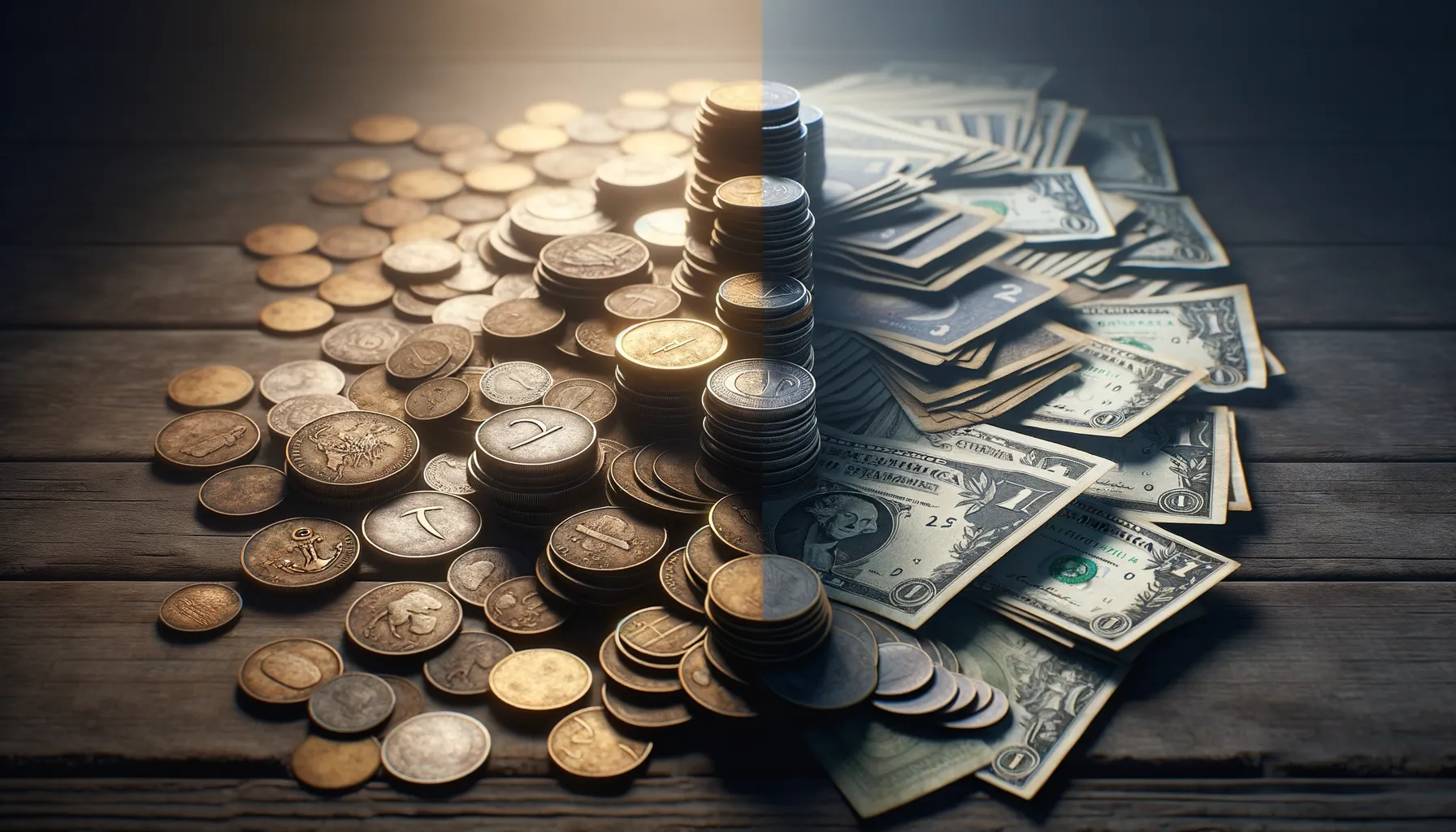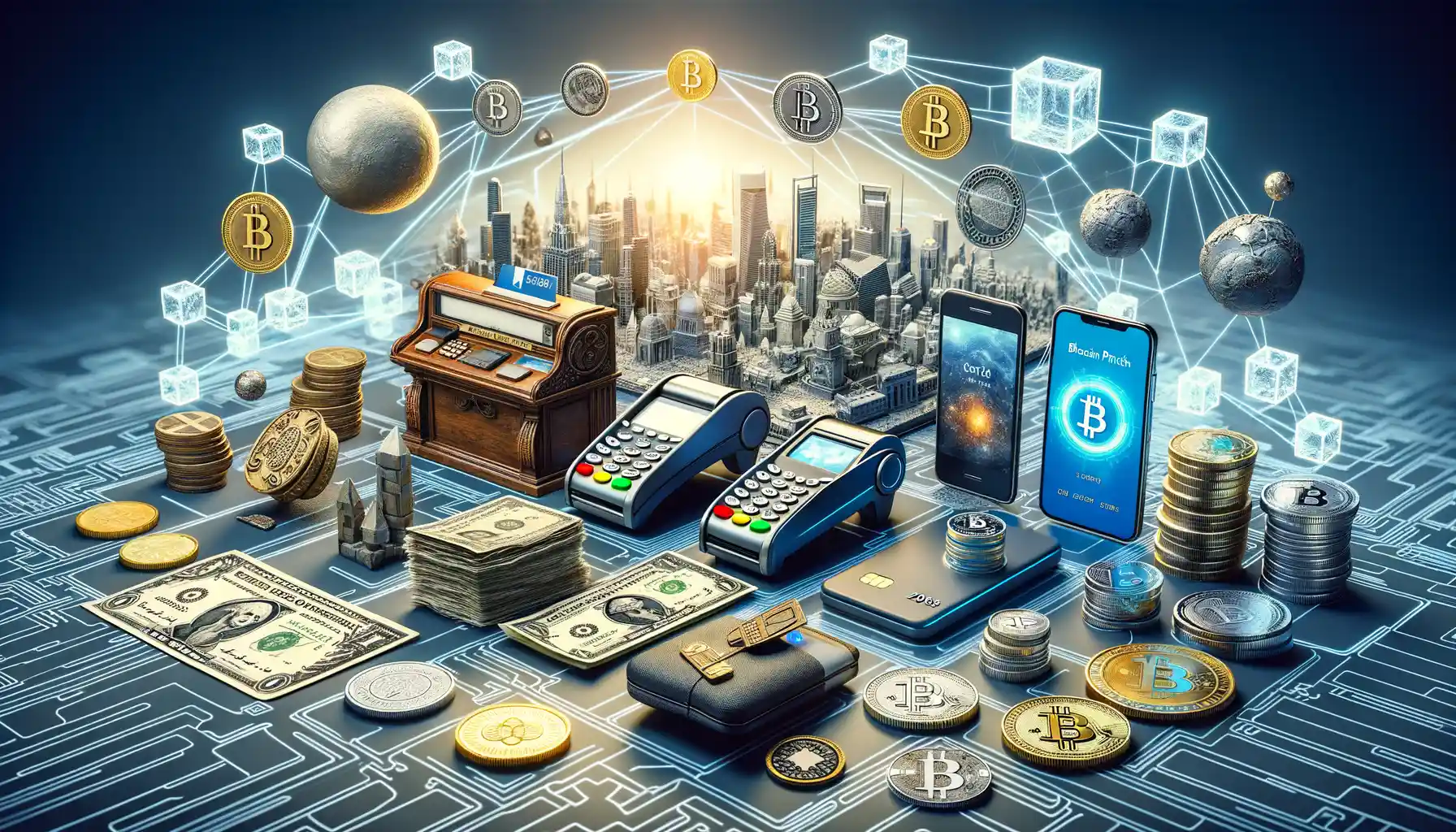The History and Origins of Currency
When Barter Ruled the World
Before the dazzling gleam of coins jingled in pockets, humans relied on the age-old system of bartering—a give-and-take economy that thrived on trust and necessity. “I’ll trade you my five goats for your sack of grain.” Sounds simple enough, right? Except when your neighbor had no use for those goats but desperately wanted salt. Enter: early currency, humanity’s ingenious solution to an age-old problem.
The earliest “money” wasn’t metal or paper but natural resources. Think shells, stones, or even cacao beans! In ancient Mesopotamia, people used silver rings and weights as currency standards. Meanwhile, across the ocean, the Aztecs considered cocoa so valuable it doubled as both money *and* a decadent dessert—talk about multi-purpose!
How Coins Changed the Game
The first actual coins didn’t appear until around 600 BCE in the ancient kingdom of Lydia (modern-day Turkey). These shiny nuggets of electrum—a naturally occurring alloy of gold and silver—revolutionized trade. Why?
Each coin carried a story, a mark of the era it came from, and a promise of a shared economic future—a legacy we’re still building upon today.
The Transition from Coins to Paper Money

Why Paper Money Was a Game-Changer
Imagine the clinking of heavy coins in a merchant’s pouch as they traveled across bustling marketplaces. It wasn’t just weight they carried—it was inconvenience. Enter: paper money. Lightweight, foldable, and a revolutionary twist in how trade was conducted. If coins were solid and tangible like earth, paper money was the breeze—light, yet powerful.
With roots in ancient China during the Tang Dynasty, the shift didn’t just appear overnight. The Chinese called it *jiaozi*, and in time, its use spread like wildfire. Paper notes freed traders from hauling chests full of coins while enabling larger transactions that would have otherwise been logistically impossible. Can you picture the relief on merchants’ faces?
A world with paper notes felt modern. They came with official markings for authenticity and were easier to guard, trade, and store. And let’s not forget the emotional shift for people—money now seemed limitless, printed like magic instead of mined with labor.
- Pro: Practical for long-distance trades.
- Con: Susceptible to counterfeiting (a new headache of the time).
Coins didn’t disappear, but in many ways, society never looked back.
The Rise of Digital Payment Technologies

From Wallets to Smartphones
It’s hard to believe, isn’t it? Just a few decades ago, grabbing your wallet before stepping outside felt as essential as putting on shoes. Today, that leather-bound staple has started collecting dust in favor of something far sleeker—your smartphone. Digital payment technologies have transformed the way we handle money, pulling us out of lines at the ATM and straight into a world where payments happen with a tap, a swipe, or even a glance.
Think about it: when was the last time you fumbled for cash at a coffee shop? Probably ages ago. With systems like Apple Pay, Google Wallet, and countless localized apps leading the charge, transactions today feel more like sending a text than handling money.
- Contactless payments: A lifesaver during quick grocery runs (and a godsend during a pandemic).
- Peer-to-peer apps: Platforms like Venmo make splitting dinner bills no longer awkward, but almost fun.
The Trust Revolution
Of course, none of this would matter without one key ingredient: trust. From biometric scans to encrypted blockchain networks, these technologies have made us believe that invisible money is safer than ever. It’s not just about convenience—it’s about feeling secure while embracing life’s fast pace.
Challenges and Opportunities in the Modern Financial Landscape

The Tug-of-War Between Innovation and Stability
Navigating today’s financial world feels like walking a tightrope—one slight misstep, and the consequences could ripple through economies. On one hand, we have dazzling advancements like blockchain, which promises transparency and decentralization. On the other, there are lingering fears of instability, as unregulated markets often feel like wild frontiers.
Consider this: while cryptocurrencies unlock opportunities for underbanked communities, they also challenge centuries-old regulatory frameworks. Governments scramble to keep pace with innovation, debating how much control is too much. And you? The consumer stands in the middle, juggling excitement with confusion about what all these changes mean for your wallet.
- How do businesses protect sensitive data in an era of rampant cybercrime?
- What happens when cash loses ground entirely—will those without technology access be left behind?
Empowering the Individual While Embracing Uncertainty
The digital revolution puts unprecedented power in our hands. With just a phone, you can invest in stocks, transfer funds instantly, or even buy NFTs. But this empowerment comes with fine print. Many face the learning curve of understanding digital tools, while older generations may feel excluded entirely.
Amidst it all, there’s opportunity: banks adapting to become more inclusive, governments experimenting with Central Bank Digital Currencies (CBDCs), and entrepreneurs engineering solutions. The question is—how will you claim your place in this evolving landscape?
The Future of Currency in a Digital World

The Dawn of a Cashless Society
Picture this: a bustling street market, but instead of jingling coins or crumpled banknotes exchanging hands, it’s just a quick tap of a phone, a scan of a watch, or even a blink at a retina scanner. The days of misplacing spare change or dreading ATM visits? They’re vanishing faster than yesterday’s headlines.
Cryptocurrencies, like Bitcoin and Ethereum, are rewriting the rules. They’re not your typical money—there’s no need for a middleman. Trust is built through secure, decentralized systems that feel more sci-fi than finance. But that’s only scratching the surface. With innovations like central bank digital currencies (CBDCs), governments are blending the familiarity of traditional money with the speed and versatility of digital.
How Will We Pay Tomorrow?
It’s not just tech enthusiasts catching on. New technologies are everywhere, influencing how we pay for coffee, rent, or even a bus ride. Consider these emerging trends:
- Biometric Payments: Imagine unlocking payments with your fingerprint or smile—no wallet required.
- AI-Powered Financial Assistants: Tools that don’t just manage money but predict expenses and suggest savings.
The future of currency isn’t just digital—it’s seamless, intuitive, and maybe even invisible. Are you ready for it?




